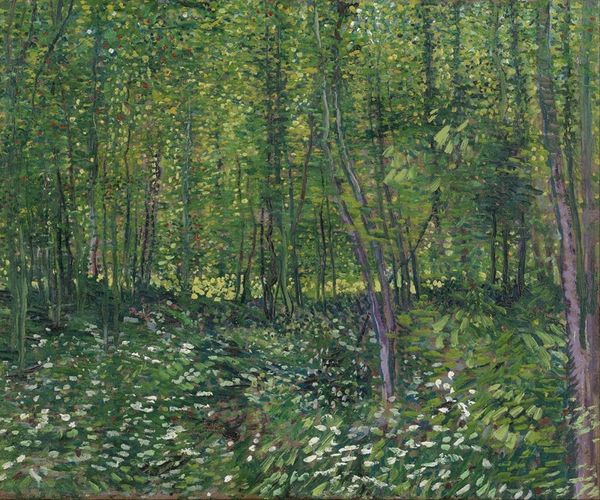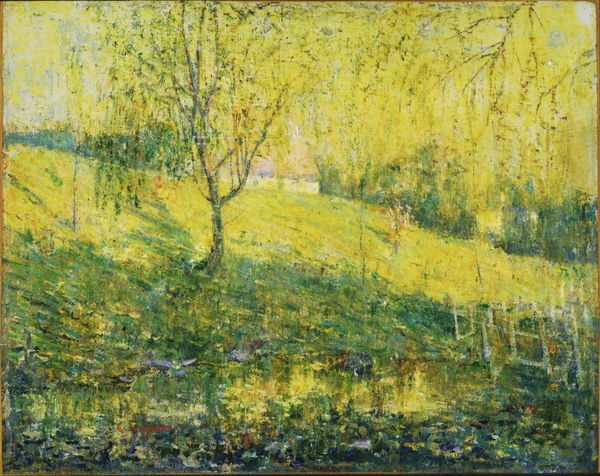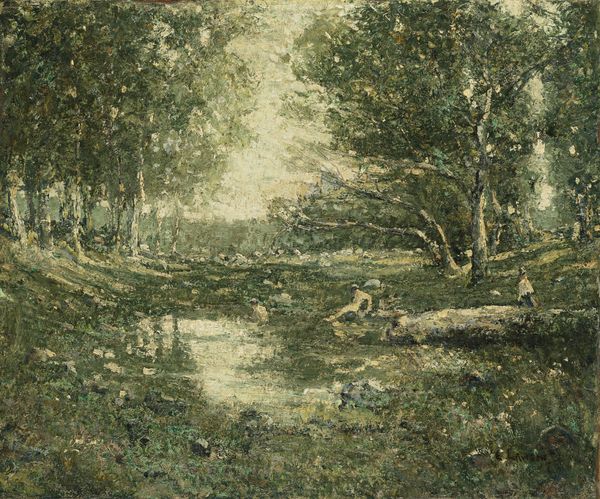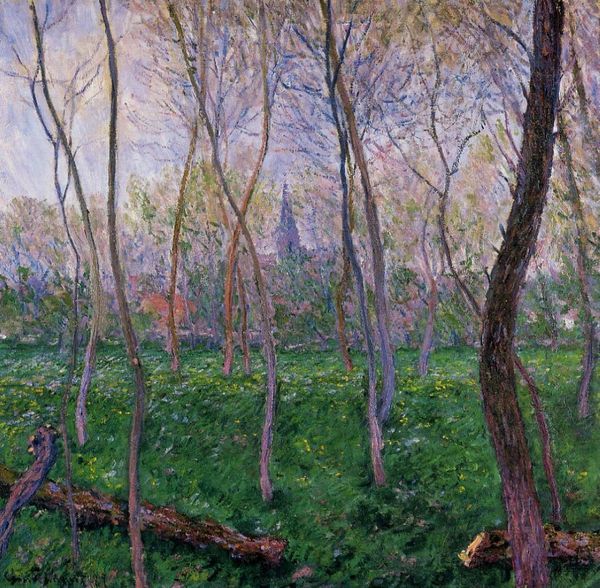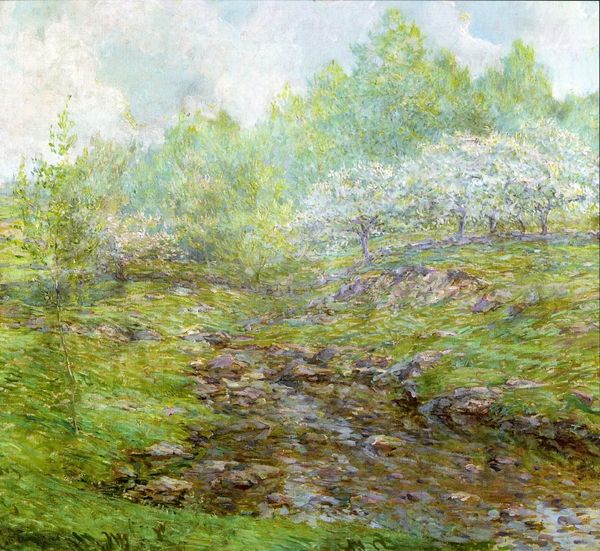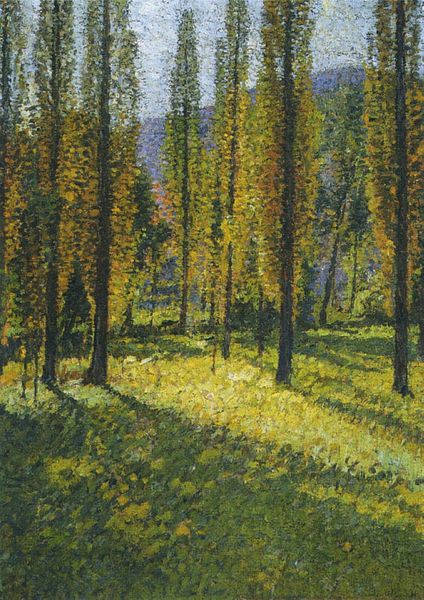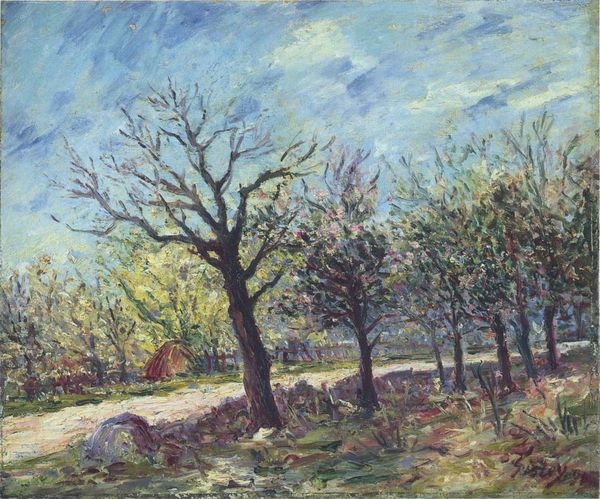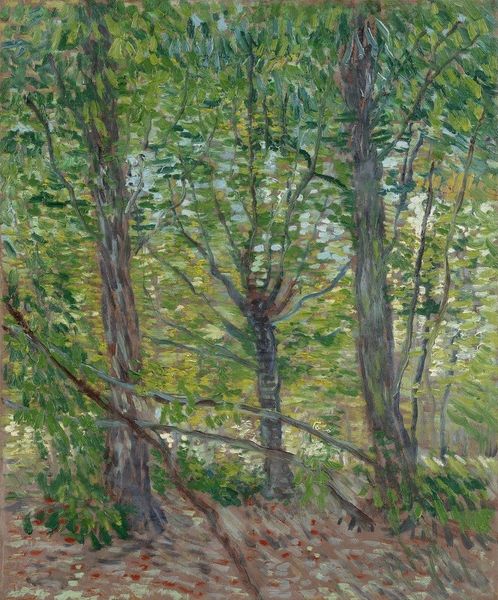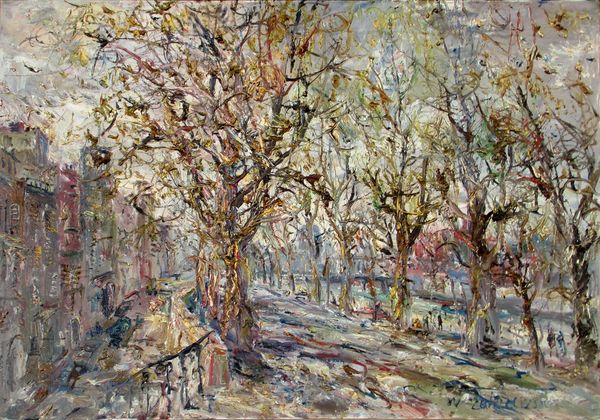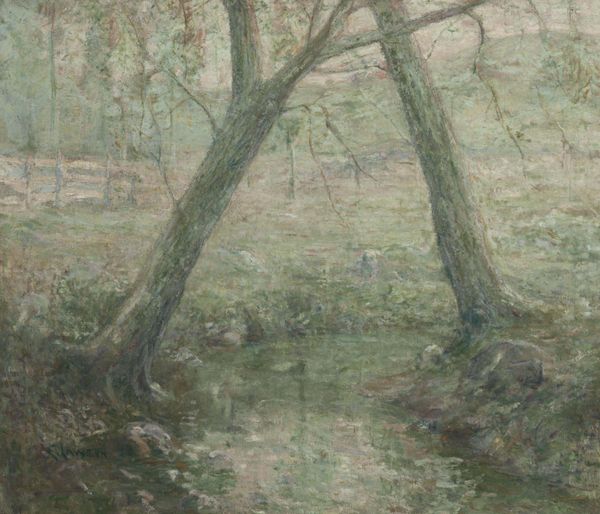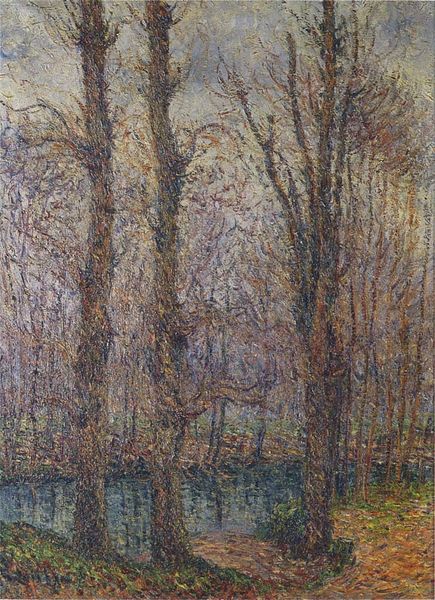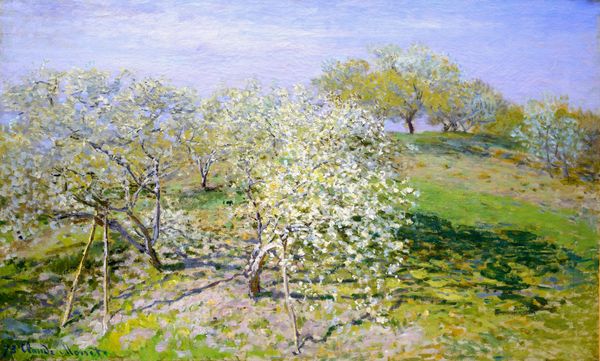
Dimensions: overall: 71.2 x 91.7 cm (28 1/16 x 36 1/8 in.) framed: 106.7 x 127 x 9.5 cm (42 x 50 x 3 3/4 in.)
Copyright: National Gallery of Art: CC0 1.0
Curator: Before us hangs Henry Ward Ranger’s “Spring Woods,” believed to have been completed around 1910. Ranger, a prominent figure in the American Barbizon school, employed an atmospheric, tonalist approach evident in this oil-on-canvas plein-air painting. Editor: My initial impression is one of vibrant light, filtered and dappled. The chromatic intensity and soft, blurred forms create an intimate atmosphere, enveloping the viewer in a springtime forest. The brushstrokes are so loose, it nearly dissolves into abstraction. Curator: Indeed, observe Ranger’s engagement with Impressionist techniques while maintaining tonalist roots. This fusion mirrors the tensions of early 20th-century American art production, as artists navigated influences from Europe while forging an independent national style, in direct competition to mass production of commercial artwork. Editor: The composition draws the eye through layers of intertwined branches and sun-drenched foliage to a path in the background. The values transition from deeper greens and browns in the foreground to luminous yellows, and pale blues hinting at depth and perspective. Two figures barely recognizable on the vanishing point create such a perfect closure for this idyllic place. Curator: Ranger's artistic output demonstrates how industrialism affected art making; it allowed artworks to be made in abundance because paint in tubes gave greater opportunity to create paintings "en plain air" and quicker. The ready availability of materials and ease with which it can be applied to any surface influenced him deeply. Editor: Speaking of application, look how the tactile quality is rich and impastoed, especially in the foreground. He almost sculpts the light with paint, building up these surfaces that refract light in very appealing way! It adds depth and weight to this otherwise delicate image. Curator: It is in the materiality that this painting’s historical context is highlighted—a convergence of European-influenced art and American aesthetic sensibility born from material consumption. How fascinating it is! Editor: It really highlights the material splendor of early spring; I find it uplifting—such effective visual cues of optimism with the start of a fresh season.
Comments
No comments
Be the first to comment and join the conversation on the ultimate creative platform.


